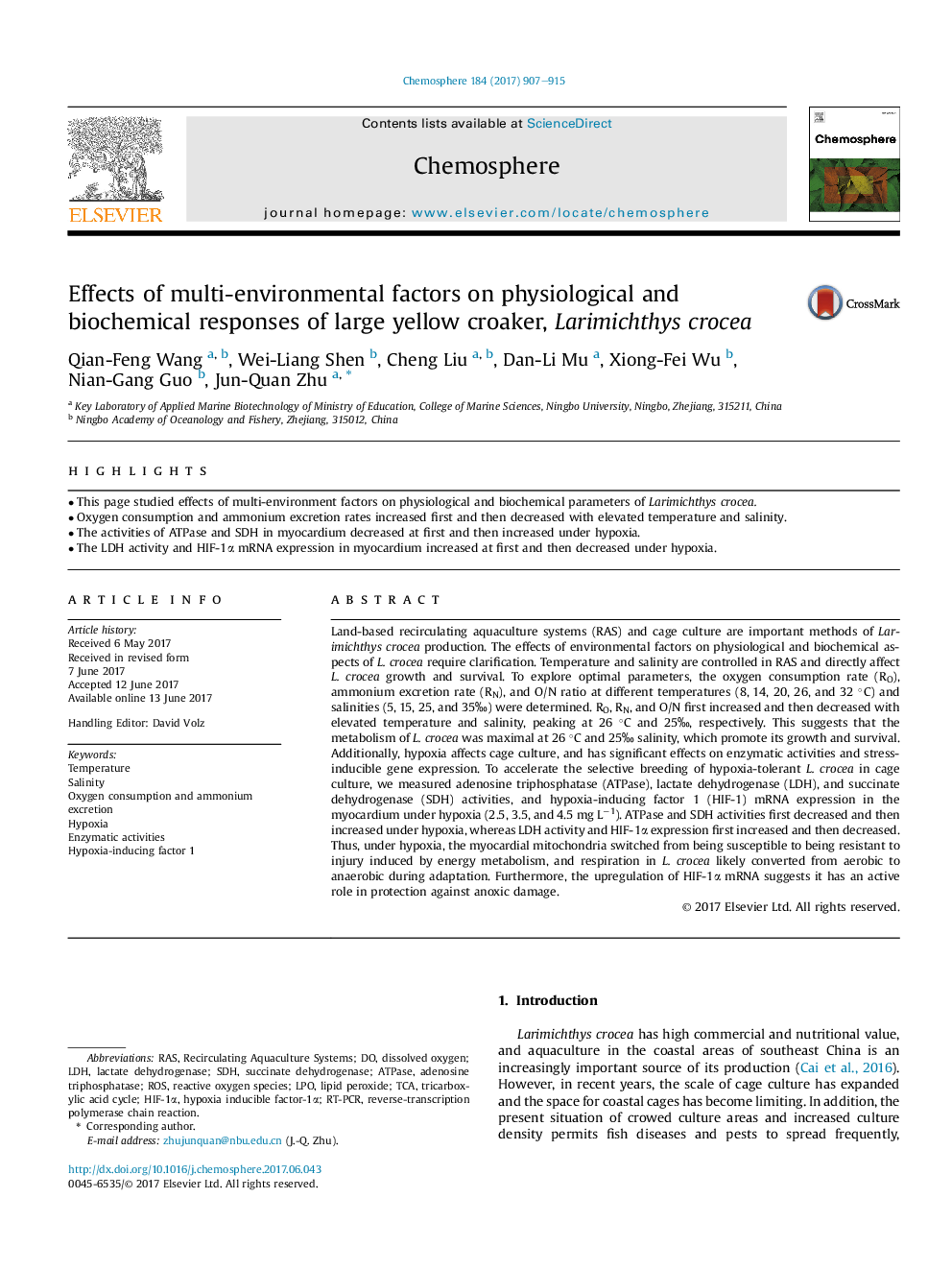| کد مقاله | کد نشریه | سال انتشار | مقاله انگلیسی | نسخه تمام متن |
|---|---|---|---|---|
| 5746269 | 1618787 | 2017 | 9 صفحه PDF | دانلود رایگان |

- This page studied effects of multi-environment factors on physiological and biochemical parameters of Larimichthys crocea.
- Oxygen consumption and ammonium excretion rates increased first and then decreased with elevated temperature and salinity.
- The activities of ATPase and SDH in myocardium decreased at first and then increased under hypoxia.
- The LDH activity and HIF-1α mRNA expression in myocardium increased at first and then decreased under hypoxia.
Land-based recirculating aquaculture systems (RAS) and cage culture are important methods of Larimichthys crocea production. The effects of environmental factors on physiological and biochemical aspects of L. crocea require clarification. Temperature and salinity are controlled in RAS and directly affect L. crocea growth and survival. To explore optimal parameters, the oxygen consumption rate (RO), ammonium excretion rate (RN), and O/N ratio at different temperatures (8, 14, 20, 26, and 32 °C) and salinities (5, 15, 25, and 35â°) were determined. RO, RN, and O/N first increased and then decreased with elevated temperature and salinity, peaking at 26 °C and 25â°, respectively. This suggests that the metabolism of L. crocea was maximal at 26 °C and 25â° salinity, which promote its growth and survival. Additionally, hypoxia affects cage culture, and has significant effects on enzymatic activities and stress-inducible gene expression. To accelerate the selective breeding of hypoxia-tolerant L. crocea in cage culture, we measured adenosine triphosphatase (ATPase), lactate dehydrogenase (LDH), and succinate dehydrogenase (SDH) activities, and hypoxia-inducing factor 1 (HIF-1) mRNA expression in the myocardium under hypoxia (2.5, 3.5, and 4.5 mg Lâ1). ATPase and SDH activities first decreased and then increased under hypoxia, whereas LDH activity and HIF-1α expression first increased and then decreased. Thus, under hypoxia, the myocardial mitochondria switched from being susceptible to being resistant to injury induced by energy metabolism, and respiration in L. crocea likely converted from aerobic to anaerobic during adaptation. Furthermore, the upregulation of HIF-1α mRNA suggests it has an active role in protection against anoxic damage.
Journal: Chemosphere - Volume 184, October 2017, Pages 907-915